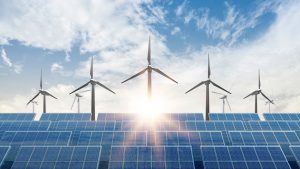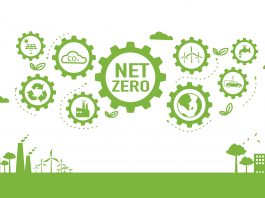Anthony Ainsworth, Chief Operating Officer at npower Business Solutions, discusses how businesses are making the move towards renewable energy sources.
The volatility seen in the energy sector over the past two years has led to many businesses seeking ways to reduce their reliance on the wholesale market and move towards procuring their power from renewable energy sources.
It’s easy to see why. Last year marked a landmark year for renewables generation in the UK, with figures from Imperial College London stating that 40% of Britain’s electricity came from renewable sources in 2022, a record amount.
It is also central to the government’s plans for a more secure and sustainable homegrown energy system. In its ‘Powering Up Britain’ document published earlier this year – which included the Energy Security Strategy and Net Zero Growth Strategy – the government outlined its ambitions for increasing the deployment of renewable energy to achieve a decarbonised energy system by 2035.
However, in its latest State of the Market report, the Association for Renewable Energy and Clean Technology said that, while there has been a positive delivery of renewable power deployment, “policy uncertainty, planning delays, deep infrastructure concerns and lack of a route to market have all stymied the renewable energy and clean technology sector and remain to be addressed.”
That said, it also predicts that, with effective policies and regulations in place, the sector could be worth £46bn by 2035, with jobs in the industry increasing to 210,000 by the same date.
From working with thousands of business customers, many of whom would like to buy their energy from cleaner sources to not only reduce their energy risk but also lower their carbon emissions, we know that the demand for renewable energy is outstripping supply.
That is why many are turning to installing sustainable energy assets on-site or purchasing their energy from an independent renewable generator via a Power Purchase Agreement (PPA).
In fact, our 2023 Business Energy Tracker report showed that there has been a notable increase in businesses investing in on-site generation to help them become more energy-resilient. Last year, just over one in four (27%) businesses said this was in their plans – this year saw it rise to over a third (36%), with solar photovoltaic (PV) the most popular solution.
So, what are the options available to businesses?
Choosing the right renewable energy asset for your business
The most suitable option will depend on the size of a business’ premises, its location, and the feasibility of installation.

Wind power
On-site wind power generation is particularly suitable for businesses with available land in non-urban areas. Those with exposed space, a high average wind speed and good site access are ideal.
Falling costs have made it more cost-effective to install, and it can be easily integrated with other low-carbon technologies such as batteries. The ROI will depend on the size of the system and how it is funded. For example, a self-funded project of a small turbine could be paid back in under ten years.
Solar PV
Solar PV is a great option for businesses with a good amount of south-facing roof space or suitable adjacent land.
Even in a post-subsidy world, the falling cost of components has made it affordable, and the technology has evolved, which means it can produce effective yields even on a cloudy day. It can also be easily integrated with storage technologies to provide 24/7 electricity.
Again, the ROI depends on the size of the system and how it is funded. Similarly, with wind, a self-funded project could pay back in five to ten years.
Biogas
The biggest opportunity for this type of renewable energy generation is for businesses in particularly hard-to-decarbonise sectors, including the food industry, agriculture, water, and waste management.
This is because biogas can be produced from sources typically used in these industries, such as crop residues, animal manure from livestock, food, and other green waste and wastewater sludge.
The cost of biogas plants can vary significantly depending on the sizes and the type of feedstocks they use, so a feasibility study should be carried out – this is a long-term investment, so both the CAPEX and OPEX need to be established to calculate the ROI.
Combined heat and power (CHP)
A CHP unit provides on-site electricity generation while the heat produced from the process is captured and used elsewhere in your building. It works by converting fuel into electricity through a generator to power on-site operations.
The heat generated during this process is then captured and can be used for heating, hot water or air conditioning. It can be used across a variety of sites, and it is particularly suited to industrial and commercial sites that use large quantities of heat and power. It is important to analyse the energy demand profile of your site to assess whether CHP is the best option.
If self-funded, CHP can achieve around 20% savings on energy costs and an average payback of around two to five years.
Battery storage
Similarly, with wind and solar PV, the cost of battery storage has fallen in recent years. However, while there is still a significant upfront cost, the benefits are huge – uninterrupted power supply, lower energy costs and maximising on-site renewables.
Buying power from an independent generator
Where installing an on-site asset isn’t possible due to site suitability issues, businesses can still purchase energy from a local renewable energy source via a PPA. PPAs are contracts that agree on energy production output and its subsequent purchase. They are made between asset holders who generate renewable power and commercial buyers. Therefore, it is always worth considering this as an alternative to the main grid supply.
What are the main benefits for business?
There are considerable benefits to installing an on-site low or zero-carbon energy asset, particularly when they are integrated with storage:
- Increased stability – less reliance on the grid means less exposure to volatile wholesale energy markets;
- This electricity produced could be sold back to the grid or to other businesses to raise further revenue;
- When integrated with storage, it can provide a flexible source of power; and
- Producing zero-carbon power helps businesses meet their renewable energy objectives.
Towards a renewable future
Business demand for renewable energy is only set to grow. However, with this demand increasing quicker than large-scale clean energy assets can be deployed, government policy needs to turn ambition into tangible action.
Until then, there is a real opportunity for businesses to take control of their own energy journey through the installation of a sustainable on-site asset or by buying their power directly from a renewable independent generator








